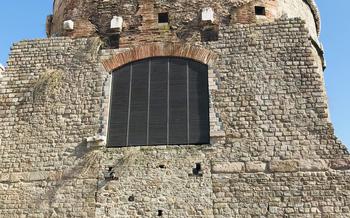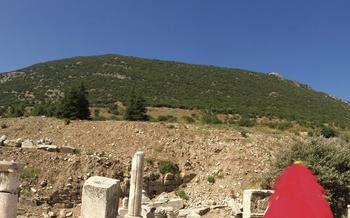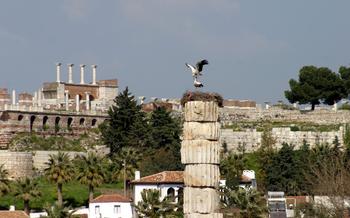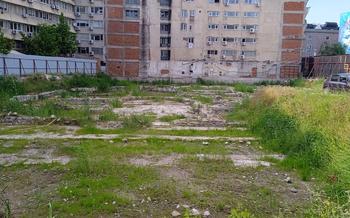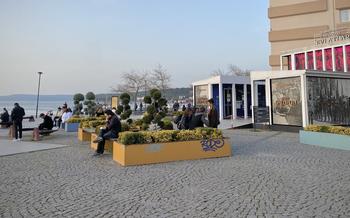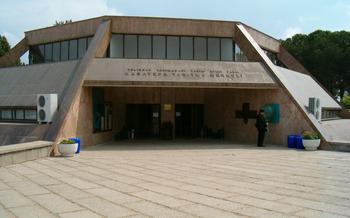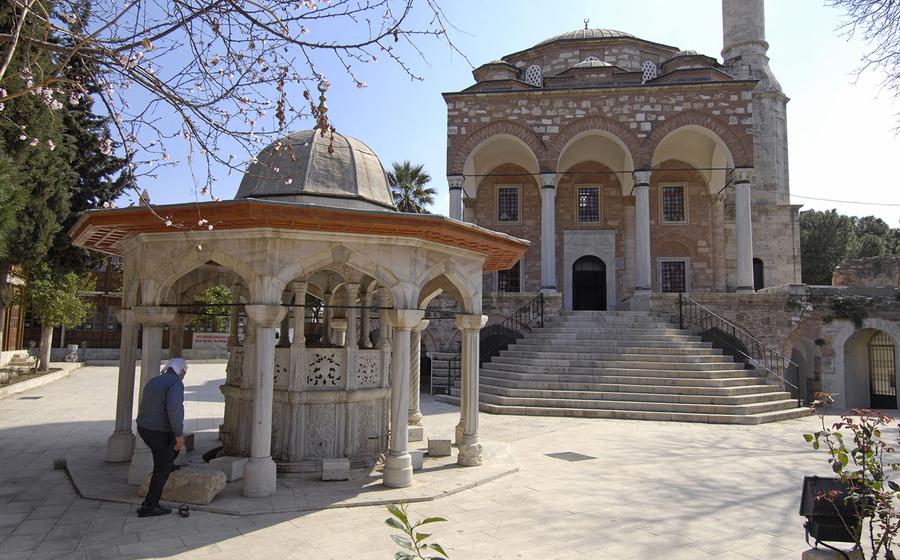
Agora of Smyrna
- A Journey Through History: Unveiling the Agora of Smyrna
- Historical Significance
- Archaeological Excavations
- Architectural Legacy
- Reaching the Agora: A Path to Antiquity
- First Impressions: Awe-Inspiring Grandeur
- The Agora's Marketplace: Bustling Heart of Commerce
- Assembly of the People: The Bouleuterion
- Temple of Zeus: Honoring the King of Gods
- Marble Terrace: A Legacy of Leisure
- A Haven of Tranquility
- A Place for Philosophical Discourse
- Architectural Elegance
- Leisurely Moments in Ancient Smyrna
- Sanctuary of Nemesis: Divine Retribution
- Theater District: Echoes of Ancient Performances
- Byzantine and Ottoman Traces: A Tapestry of Eras
- The Agora Museum: Unveiling Smyrna's Treasures
- A Stroll Through History: The Agora's Surroundings
- Local Cuisine: A Taste of Smyrna's Flavors
- Insider Tip: Capturing the Golden Hour
A Journey Through History: Unveiling the Agora of Smyrna
Nestled within the vibrant metropolis of İzmir, Turkey, lies a treasure trove from antiquity—the Agora of Smyrna. This ancient marketplace, political center, and social hub offers a captivating glimpse into the rich history and bustling life of one of the most prominent cities in the ancient world. As you walk through the Agora's sprawling ruins, you'll embark on a journey through time, discovering the architectural wonders, vibrant commerce, and political debates that shaped Smyrna's identity for centuries.
Historical Significance
The Agora of Smyrna, dating back to the 4th century BCE, was the heart of the ancient city, serving as a crucial center for trade, political gatherings, and social interactions. Over the centuries, it witnessed the rise and fall of civilizations, from the Hellenistic period to the Roman Empire and beyond. Its strategic location at the crossroads of trade routes made Smyrna a thriving commercial hub, attracting merchants and goods from across the Mediterranean.
Archaeological Excavations
Extensive archaeological excavations conducted since the 19th century have unearthed the Agora's remarkable ruins, revealing the intricate layout of streets, shops, official buildings, and temples that once stood here. The artifacts recovered during these excavations, including sculptures, inscriptions, and pottery, provide valuable insights into the daily lives, religious practices, and cultural traditions of ancient Smyrna.
Architectural Legacy
The Agora's architectural legacy is a testament to the city's wealth and grandeur. Its monumental entrance, adorned with intricate carvings, welcomes visitors to a world of history. The well-preserved Bouleuterion, or council chamber, showcases the architectural prowess of the ancient Greeks, with its rows of stone benches and impressive acoustics. The remains of the Temple of Zeus, dedicated to the king of gods, stand as a reminder of Smyrna's religious devotion.
Reaching the Agora: A Path to Antiquity
Transportation Options:
Reaching the Agora of Smyrna is a breeze, thanks to its convenient location in the heart of modern-day İzmir. The city's public transportation system offers a hassle-free journey to the ancient site. Hop on the metro or catch a bus, and you'll be dropped off right at the Agora's doorstep.
Guided Tours:
For a more immersive experience, guided tours are a fantastic option. Knowledgeable local guides will lead you through the Agora's ruins, sharing captivating stories and shedding light on the site's historical significance. These tours often include additional insights and anecdotes that bring the ancient city to life.
Self-Guided Exploration:
If you prefer to explore at your own pace, self-guided tours are also a great way to experience the Agora. Pick up a map or download a guidebook to navigate the site independently. Take your time to wander through the ruins, marvel at the architectural wonders, and let your imagination transport you back in time.
Best Time to Visit:
To fully appreciate the Agora's grandeur, plan your visit during the shoulder seasons (spring and autumn) when the weather is pleasant, and the crowds are smaller. Avoid the scorching summer heat or the chilly winter winds for a more enjoyable exploration.
First Impressions: Awe-Inspiring Grandeur
As you approach the Agora of Smyrna, an overwhelming sense of awe washes over you. The imposing entrance, with its towering columns and intricate carvings, sets the tone for an extraordinary journey back in time. The sheer scale of the Agora is breathtaking, with its sprawling ruins stretching out before you. From the moment you step through the gate, you are enveloped by the spirit of ancient Smyrna.
Panoramic views unfold before your eyes, revealing the city's former glory. The Agora's strategic location on a hilltop offers stunning vistas that stretch from the Aegean Sea to the distant mountains. The interplay of light and shadow across the ruins creates a picturesque landscape that is both captivating and evocative.
The Agora is a treasure trove of photo opportunities, with every corner offering a unique perspective. From the grand columns to the intricate mosaics and sculptures, the Agora's beauty is a photographer's dream. Whether you are a seasoned professional or a casual enthusiast, the Agora provides endless opportunities to capture the essence of this ancient city.
The Agora's Marketplace: Bustling Heart of Commerce
As you step into the Agora, the vibrant atmosphere of the ancient marketplace envelops you. Imagine the bustling streets lined with shops and stalls, each offering a unique array of goods and services. Merchants display their wares, from fresh produce and spices to intricately crafted pottery and textiles. The air is filled with the sounds of haggling, laughter, and the clinking of coins as buyers and sellers strike deals.
Here, you can witness the economic pulse of ancient Smyrna, a city renowned for its trade and commerce. Artisans showcase their skills, creating beautiful jewelry, sculptures, and other works of art. Farmers bring in their freshly harvested crops, ensuring a steady supply of food for the city's inhabitants. Merchants from far-off lands gather to exchange exotic goods, fostering cultural exchange and enriching the lives of the people.
As you wander through the marketplace, take a moment to imagine yourself as a resident of ancient Smyrna, bartering for goods, indulging in local delicacies, or simply soaking up the lively atmosphere. The Agora served as the city's economic and social hub, where people from all walks of life converged to conduct business and connect with one another.
Assembly of the People: The Bouleuterion
As you venture deeper into the Agora, the Bouleuterion, or Council Chamber, commands attention. This impressive structure once served as the political heart of ancient Smyrna, where the city's leaders convened to discuss crucial matters and make decisions that shaped the lives of its citizens.
The Bouleuterion's grand façade hints at the significance it held in ancient times. Its well-preserved stone walls and intricate carvings speak of skilled craftsmanship and architectural prowess. Inside, a spacious chamber awaits, adorned with rows of stone benches where council members gathered to deliberate.
Imagine the lively atmosphere as the city's leaders engaged in passionate debates, discussing laws, trade policies, and the well-being of Smyrna. Their voices echoed through the chamber, reflecting the democratic spirit that flourished in this ancient city.
Although time has taken its toll, the Bouleuterion stands as a testament to ancient Smyrna's commitment to self-governance and collective decision-making. Its ruins evoke a sense of civic responsibility and remind us of the enduring legacy of democracy that originated in these very lands.
Temple of Zeus: Honoring the King of Gods
Amidst the ruins of the Agora, the Temple of Zeus stands as a testament to the ancient city's religious devotion. Dedicated to the king of the Olympian gods, this majestic structure once housed a colossal statue of Zeus, revered by the people of Smyrna as a symbol of divine power and protection.
Although time and natural disasters have worn away much of the temple's grandeur, its imposing columns and intricate carvings still evoke a sense of awe and wonder. Visitors can marvel at the architectural details, including the finely sculpted capitals and the remnants of the temple's pediment, which once depicted scenes from Greek mythology.
Step inside the temple's cella, the inner chamber where the statue of Zeus once resided, and feel the weight of history envelop you. Imagine the ancient priests performing sacred rituals, offering sacrifices, and seeking guidance from the oracle of Zeus. The temple's atmosphere is palpable, transporting visitors back to a time when gods and goddesses were believed to walk among mortals.
Pay homage to the ancient beliefs and traditions that shaped the lives of the people of Smyrna as you explore this sacred site. Let the spirit of Zeus, the protector and ruler of the gods, guide your journey through the Agora, reminding you of the enduring power of faith and the significance of religious devotion in ancient Greek culture.
Marble Terrace: A Legacy of Leisure
Amidst the bustling marketplace and grand civic buildings of the Agora of Smyrna, a tranquil oasis awaits visitors—the Marble Terrace. This elegant expanse, adorned with intricate mosaics and surrounded by stately columns, was once a place of relaxation and social gatherings for the city's elite.
A Haven of Tranquility
In the ancient world, the Marble Terrace served as a retreat from the lively chaos of the Agora. Here, citizens could stroll leisurely, enjoying the shade of the colonnades and the gentle breeze that swept across the terrace. The intricate mosaic floors, depicting scenes from mythology and nature, provided a feast for the eyes, while the panoramic vistas of the city and the shimmering sea beyond created a breathtaking backdrop.
A Place for Philosophical Discourse
The Marble Terrace was not merely a place of leisure but also a venue for philosophical discussions and intellectual pursuits. Philosophers and scholars would gather here to engage in lively debates, sharing their ideas and challenging each other's perspectives. The serene atmosphere of the terrace fostered deep contemplation and facilitated the exchange of knowledge.
Architectural Elegance
The Marble Terrace is a testament to the architectural prowess of the ancient Greeks. Constructed using exquisite white marble, the terrace features a series of graceful columns that support a delicately carved entablature. The intricate capitals of the columns, adorned with acanthus leaves and volutes, showcase the exceptional craftsmanship of the artisans who created this masterpiece.
Leisurely Moments in Ancient Smyrna
Imagine yourself reclining on a marble bench, sheltered from the sun by the shade of the colonnades. As you gaze out over the bustling Agora and the distant sea, let your mind wander back in time. Picture philosophers engaging in lively debates, merchants haggling over prices, and citizens going about their daily lives. The Marble Terrace invites you to step into the past and experience the vibrant atmosphere of ancient Smyrna.
Sanctuary of Nemesis: Divine Retribution
Amidst the bustling Agora, a sanctuary dedicated to the goddess Nemesis stands as a testament to ancient beliefs in divine retribution. In Greek mythology, Nemesis personified the balance of justice, ensuring that those who committed acts of hubris or injustice faced consequences for their actions.
The sanctuary, believed to date back to the 4th century BC, is a solemn and evocative space. It comprises a small temple and an altar, where offerings were made to appease the goddess and seek her favor. Visitors can still discern the intricate carvings on the altar, depicting scenes from Nemesis's tales.
One of the most captivating aspects of the sanctuary is its connection to the myth of Niobe. According to the legend, Niobe boasted of her superiority over Leto, the mother of Apollo and Artemis. In retaliation, Apollo killed Niobe's seven sons and Artemis her seven daughters. The sanctuary is believed to have been built on the spot where Niobe, consumed by grief, turned into a weeping stone.
Today, visitors to the Sanctuary of Nemesis can immerse themselves in the stories and legends surrounding this intriguing goddess. It's a place to reflect on the consequences of one's actions and to appreciate the ancient Greek belief in divine justice.
Theater District: Echoes of Ancient Performances
As you venture further into the Agora, the echoes of ancient performances guide you towards the Theater District. This remarkable complex showcases two distinct venues that once hosted a vibrant array of theatrical productions, musical concerts, and public events.
The Odeon, a smaller and more intimate theater, boasts exceptional acoustics, creating an immersive experience for spectators. Its well-preserved seating tiers offer a glimpse into the intimate atmosphere of ancient performances. Imagine the hushed whispers of the audience, the resonant melodies of musicians, and the captivating voices of actors filling this enchanted space.
In contrast, the Stadium, a grand and imposing structure, served as the stage for larger-scale spectacles. Its colossal size and carefully designed seating arrangements allowed thousands of spectators to gather and witness thrilling gladiatorial contests, chariot races, and other awe-inspiring events. As you stand amidst these ancient ruins, let your imagination transport you back in time, to a world where the roar of the crowd and the pulse-pounding excitement of the games filled the air.
The Theater District not only provided entertainment but also played a crucial role in shaping the cultural and social fabric of ancient Smyrna. It was a place where people from all walks of life came together to experience the power of live performances, to share in collective emotions, and to celebrate the human spirit.
Byzantine and Ottoman Traces: A Tapestry of Eras
As the centuries unfolded, Smyrna, like many cities in Anatolia, underwent transformations under different rulers. In the 5th century AD, Smyrna became part of the Byzantine Empire, leaving its mark with the construction of a basilica, a testament to the city's growing Christian population. The basilica's ruins, with their intricate mosaics and architectural details, offer a glimpse into this era.
Later, in the 14th century, the Ottoman Turks conquered Smyrna, ushering in a new period of history. The Ottomans constructed caravanserais, inns that provided shelter and services to travelers and merchants along the trade routes. These caravanserais, with their distinctive architecture and historical significance, stand as reminders of Smyrna's role as a vital hub in the Ottoman Empire.
The Agora of Smyrna, with its layers of history, reflects the city's resilience and adaptability. From its ancient Greek origins to its Byzantine and Ottoman influences, the Agora showcases the diverse cultural heritage that has shaped modern-day İzmir.
The Agora Museum: Unveiling Smyrna's Treasures
Nestled within the Agora's confines, the Agora Museum serves as a treasure trove of artifacts unearthed during the archaeological excavations. Here, visitors can embark on a journey through time, gaining invaluable insights into the daily lives of Smyrna's ancient inhabitants. Mosaics, sculptures, and inscriptions adorn the museum's halls, each piece whispering tales of the city's rich past. From intricate floor mosaics depicting scenes from mythology to finely crafted statues of gods and goddesses, the Agora Museum offers a glimpse into the artistic and cultural heritage of ancient Smyrna. Furthermore, the museum houses a collection of inscriptions that provide valuable historical context, shedding light on the city's political, economic, and social structures. Through these artifacts, the Agora Museum not only preserves the city's legacy but also invites visitors to unravel the fascinating stories that shaped ancient Smyrna.
A Stroll Through History: The Agora's Surroundings
Beyond the confines of the Agora, the city of İzmir unveils a tapestry of history and culture. A short walk from the Agora, you'll encounter the remnants of the ancient city walls, standing as silent witnesses to Smyrna's resilience over the centuries. Explore the historic neighborhoods surrounding the Agora, where charming Ottoman houses and traditional Turkish architecture blend harmoniously with modern-day life.
The Agora's proximity to the vibrant city center of İzmir offers a unique opportunity to experience the city's contemporary allure. Stroll along the bustling Kordon, İzmir's picturesque seafront promenade, and soak in the lively atmosphere as locals and tourists alike revel in the city's vibrant energy.
As you wander through the streets of modern-day İzmir, you'll discover a city that seamlessly blends its rich past with the dynamism of the present. From trendy cafes and boutiques to historic landmarks, İzmir offers a captivating fusion of old and new, inviting you to explore its diverse cultural heritage.
Local Cuisine: A Taste of Smyrna's Flavors
A journey to the Agora of Smyrna would be incomplete without savoring the delectable cuisine that has been a hallmark of this ancient city. Smyrna, now known as İzmir, has long been a melting pot of cultures, and its cuisine reflects this rich diversity.
Strolling through the vibrant streets surrounding the Agora, you'll find an array of traditional Turkish dishes infused with local flavors. From gözleme, a savory flatbread filled with cheese, spinach, or minced meat, to the aromatic street food of kumru, a toasted sandwich stuffed with sausage, cheese, and tomato, there's something to tempt every palate.
For a taste of the sea, indulge in the freshly caught seafood that İzmir is renowned for. Grilled octopus, succulent calamari, and tender mussels are just a few of the delights you can savor. Pair your meal with a glass of local wine, produced in the surrounding vineyards, to complete the culinary experience.
In the heart of the Agora, you'll find traditional Turkish coffee houses, where you can sip on a steaming cup of kahve and immerse yourself in the local atmosphere. Accompany your coffee with a sweet treat, such as Turkish delight, a confection of rose-scented jelly cubes dusted with powdered sugar, or lokum, a soft, chewy dessert made with nuts and syrup.
Whether you choose to dine at a traditional restaurant or savor the street food offerings, the culinary delights of İzmir will leave you with a lasting impression. So, as you explore the ancient Agora of Smyrna, don't forget to tantalize your taste buds with the flavors of this vibrant city.
Insider Tip: Capturing the Golden Hour
As the sun begins its descent, casting a warm, golden glow across the Agora, a magical transformation takes place. This fleeting moment, known as the golden hour, is a photographer's paradise, offering unparalleled opportunities to capture the Agora's beauty in all its glory. The soft, diffused light bathes the ruins in a warm embrace, highlighting their intricate details and textures. Shadows lengthen, creating dramatic contrasts that add depth and dimension to your shots.
Whether you're an experienced photographer or simply an enthusiast with a passion for capturing stunning images, the golden hour is the perfect time to visit the Agora. As the crowds thin and the air takes on a tranquil glow, you'll have the chance to immerse yourself in the ancient atmosphere and capture the essence of this remarkable site. So, set your alarm early, pack your camera, and prepare to be captivated by the Agora's enchanting beauty during the golden hour.
